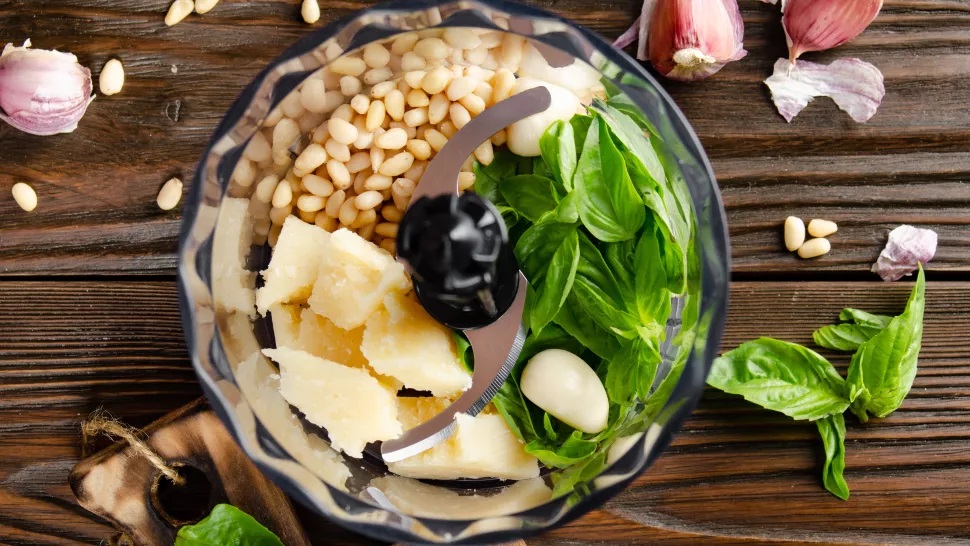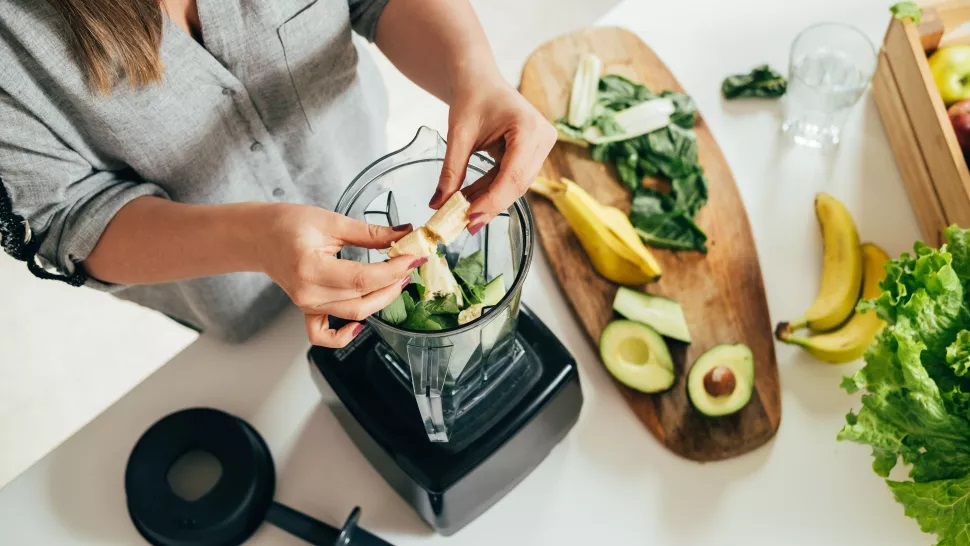Here’s the difference between a food processor vs. blender
Food processor vs. blender is a question all novice chefs will have googled at some point. There are a lot of similarities between these two appliances, both of which have fast-spinning blades at their core designed to chop up food into tiny pieces. However, they are ultimately designed for different purposes.
How a food processor works
Food processors are designed to save you the time of chopping ingredients by hand and providing a more consistent result in a matter of seconds. While they’re mostly known for their vegetable chopping abilities, they’re actually quite versatile appliances.
Food processors come with multiple blades and discs which allow them to grate, shred, slice and dice. They can even be used for lesser known food-prep tasks, such as kneading dough or grinding meat. While they handle solid foods, food processors can also be used to puree and create dips and dressings, so there is some crossover with blenders to an extent.
These kitchen countertop appliances vary in size, but they take up a similar amount of space compared to a full-size blender. They come with a base, which often offers a couple of speed settings to give better control of the processing. A removable plastic bowl sits on top with a built-in feed tube.
Depending on which attachment you use, your method of processing will vary. The blade(s) sits at the base of the bowl and can slice and chop ingredients directly. Whereas the discs for grating and slicing are held in a higher position in the bowl, and you ‘feed’ ingredients through it as it rotates via the feeding tube.
Because they come with so many attachments, food processors can be more difficult to store compared to blenders. However, some come with storage cases to keep everything together and to prevent accidents.
How a blender works
Blenders are the more popular choice of these two appliances, and most of us have a better idea of what a blender looks like. Typically, it features a large, tall jug with a small, often fixed, blade at the bottom, which sits on top of a base. These come with more speed settings compared to food processors, and some even feature dedicated programs, such as for smoothies or frozen drinks.
While this would be a typical example of a full-size jug blender, there are smaller options available known as personal blenders. These are essentially used to explicitly make smoothies and the container doubles-up as a cup for on-the-go. Handheld blenders also exist, called immersion blenders. These look completely different to the other types of blender and have their own distinct function. They’re best used for smaller portions of sauces and dips and can provide a more concentrated blend.
Full-size blenders are mostly used to create liquid-based recipes, such as smoothies, soups, sauces and dips. But they can crush ice too, so they’re often used to blend frozen cocktails from scratch, such as mojitos. When blending liquids, this appliance should provide fine and consistent results, with no chunks in sight. It should also be able to puree thicker recipes, such as hummus, in a matter of minutes.
Some blenders can also create so much friction as it blends that it heats the ingredients within, essentially producing hot, fresh soup at the touch of a button. Although not all blenders can reach such speeds for a prolonged time.
Once blended, you simply pour the ingredients out of the jug via the spout and you’re ready to serve. Cleaning a blender also couldn’t be easier. You simply add soap and water to the jug, run it on full blend for 10-20 seconds and watch it clean itself.
Post time: Sep-16-2022



